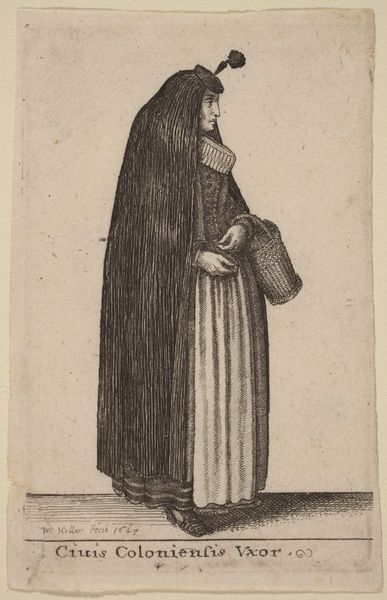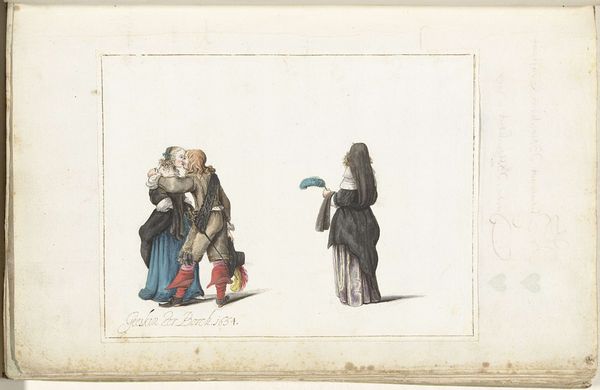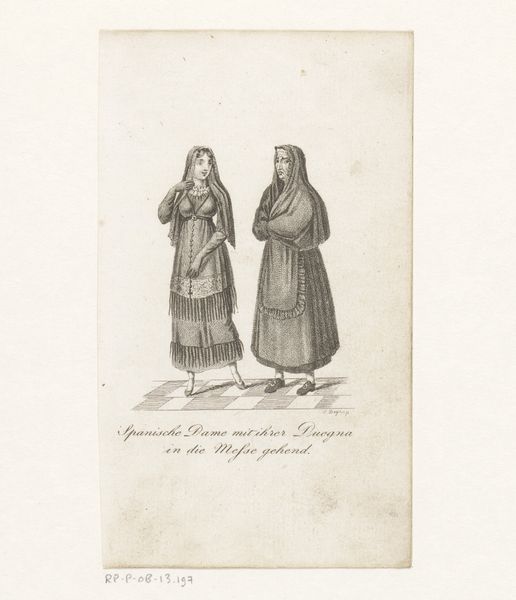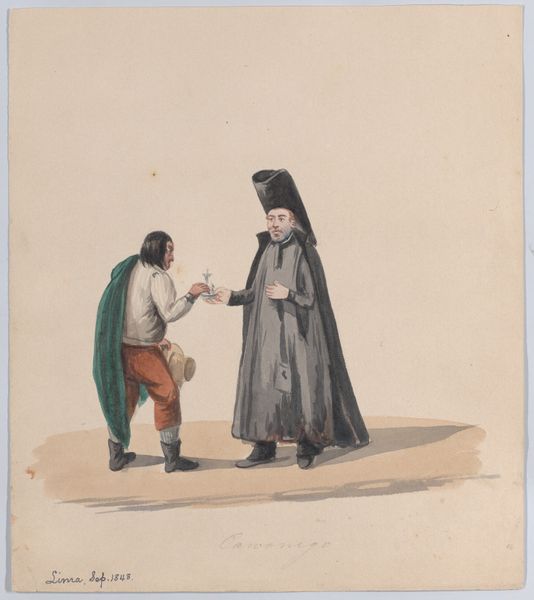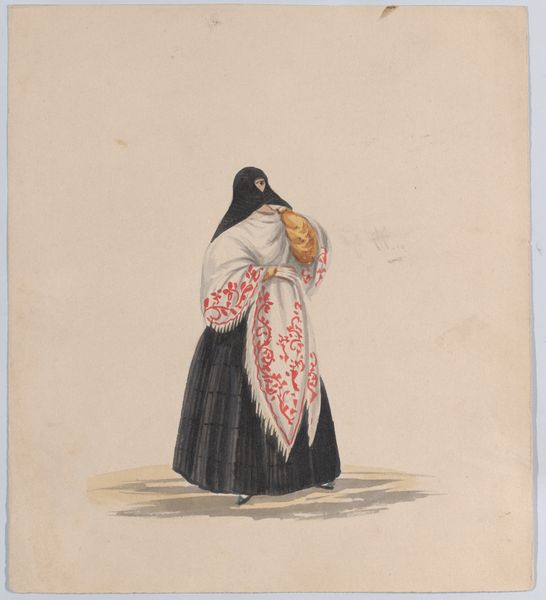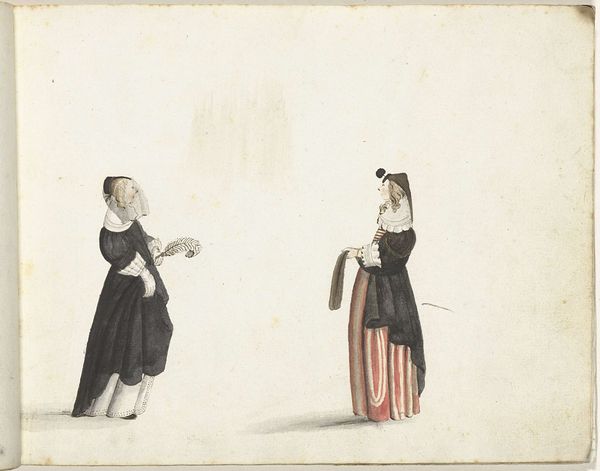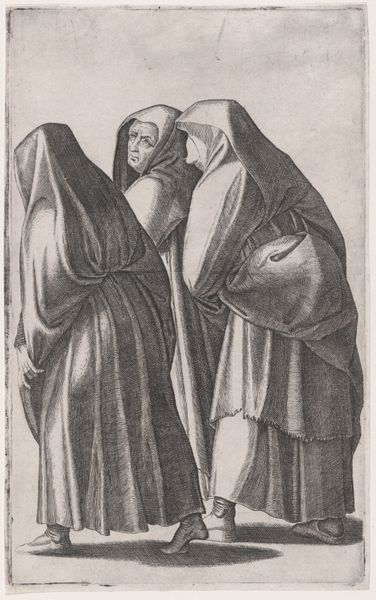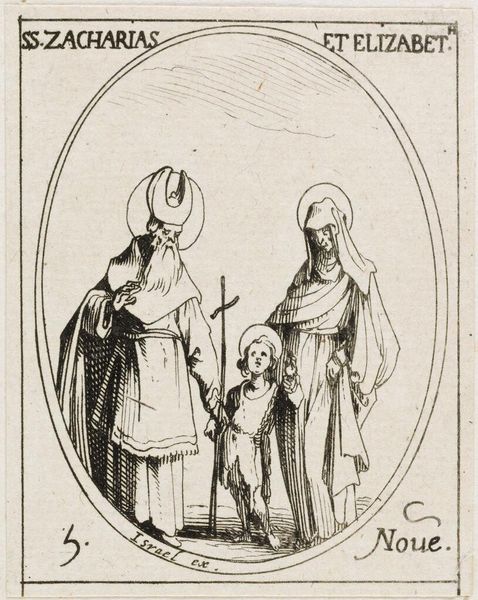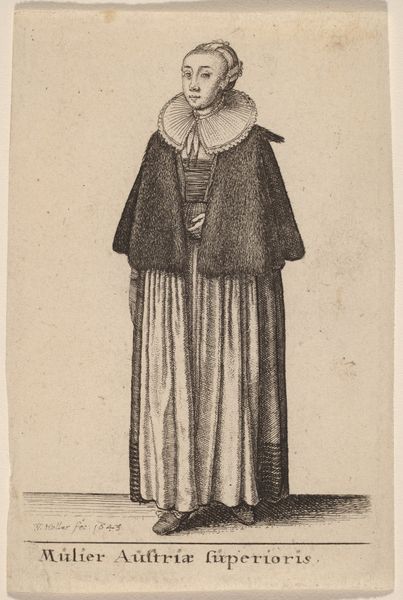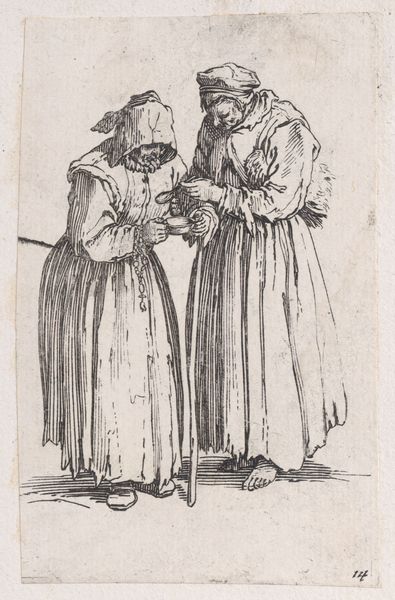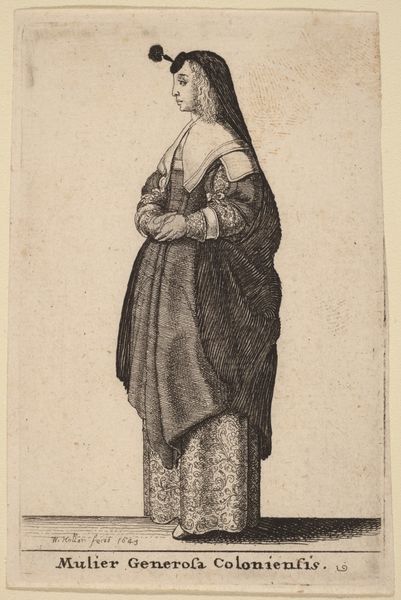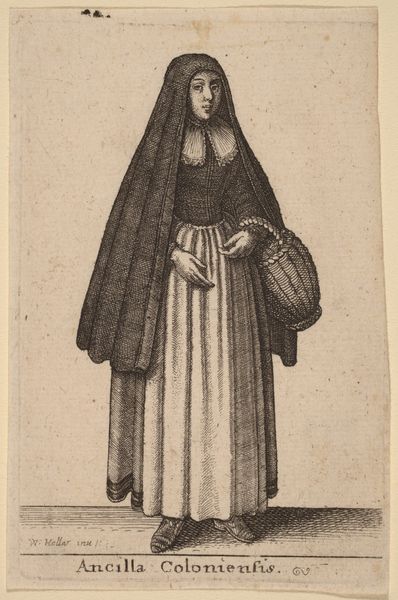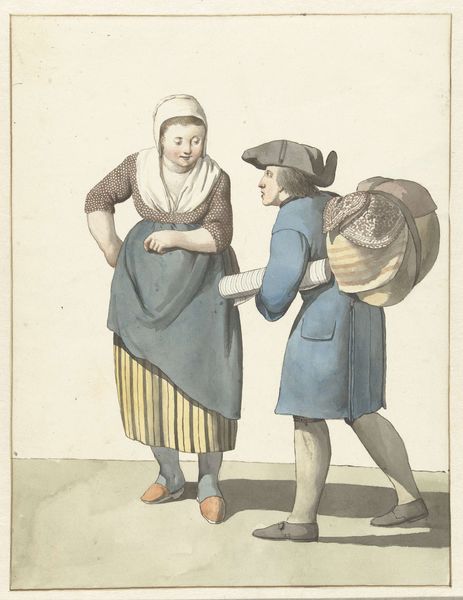
Ancient Maltese Costume, A Lady in a Faldetta 1900 - 1967
0:00
0:00
drawing, print, watercolor
#
portrait
#
drawing
# print
#
watercolor
#
watercolour illustration
#
genre-painting
#
portrait art
#
watercolor
Dimensions: sheet: 6 5/16 x 4 3/4 in. (16.1 x 12 cm)
Copyright: Public Domain
Curator: This watercolour print is titled "Ancient Maltese Costume, A Lady in a Faldetta," attributed to Vincenzo Feneck, and estimated to be created between 1900 and 1967. It is now part of the collection at the Metropolitan Museum of Art. Editor: The stark black against the faded watercolor gives the piece a very dramatic, almost theatrical quality. It immediately evokes a sense of mystery, wouldn’t you agree? The weight of the draped fabric seems to define the entire composition. Curator: Absolutely. The Faldetta, that distinctive hooded garment, served a significant social function in Maltese society, particularly for women. It acted as both a symbol of modesty and a cultural identifier. Its origins are debated, some suggesting Spanish influence, reflecting Malta's complex historical ties. Editor: From a formal perspective, look at how the artist plays with light and shadow to sculpt the figures beneath those heavy cloaks. The contrasting textures are also quite interesting; the soft watercolor rendering of the fabric against the sharper delineation of their faces. What story does it seem to convey about those hidden figures? Curator: It tells a story of social norms and the roles imposed on women. While the Faldetta provided a certain amount of freedom of movement, it simultaneously represented constraints and expectations within the deeply religious Maltese culture. One can read its presence as signaling social status. Editor: Consider the very limited palette. Fenech concentrates primarily on delineating dark, simple lines and focuses all our attention on shape, form, and overall composition. We almost overlook their features entirely. There is definitely a strong element of repression represented. Curator: Exactly, the work also invites discussion on Malta's identity in the early twentieth century, bridging tradition and modernity. Despite influences from occupying powers, works such as this reinforce unique national characteristics and celebrate Maltese culture. It helps us contemplate national consciousness during the age when Malta underwent massive socio-political changes. Editor: The somber color palette and angular shapes resonate far more than simple genre-painting to me, personally, making "Ancient Maltese Costume" something profound through minimal gesture and broad contextualization. It holds depth that I didn't notice at first glance. Curator: Indeed. Feneck's portrayal, when viewed with a sensitivity toward the island's socio-political context, adds layers of significance that cannot be seen if focusing merely on aesthetic components. Both perspectives allow to engage the multilayered legacy it signifies for Maltese identity.
Comments
No comments
Be the first to comment and join the conversation on the ultimate creative platform.
